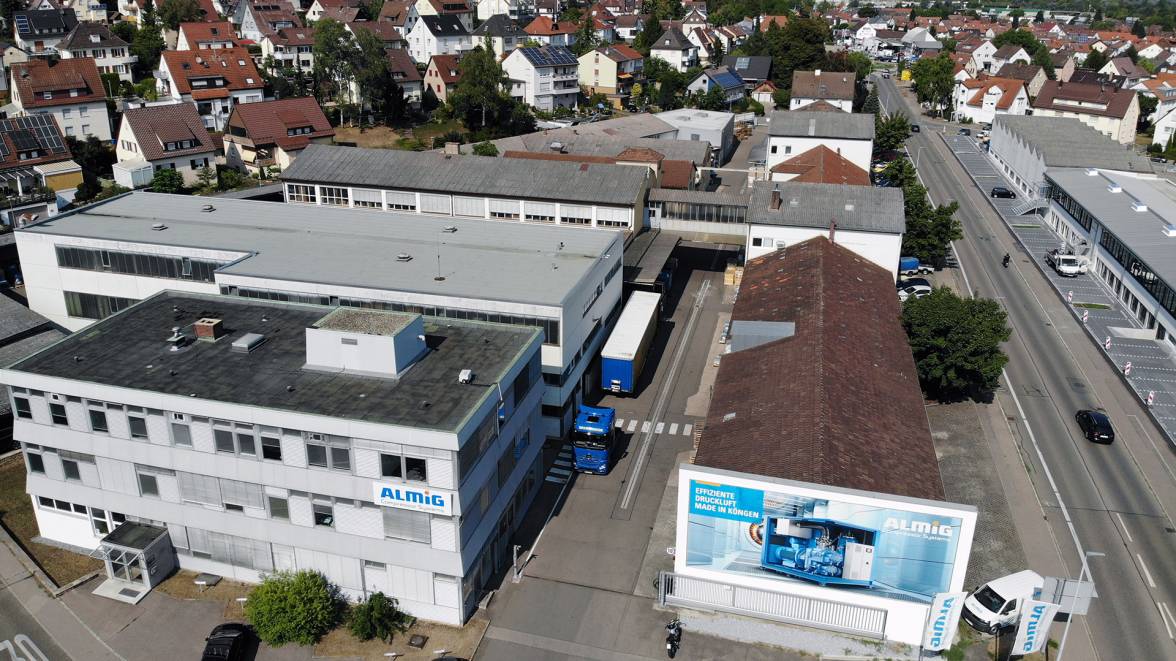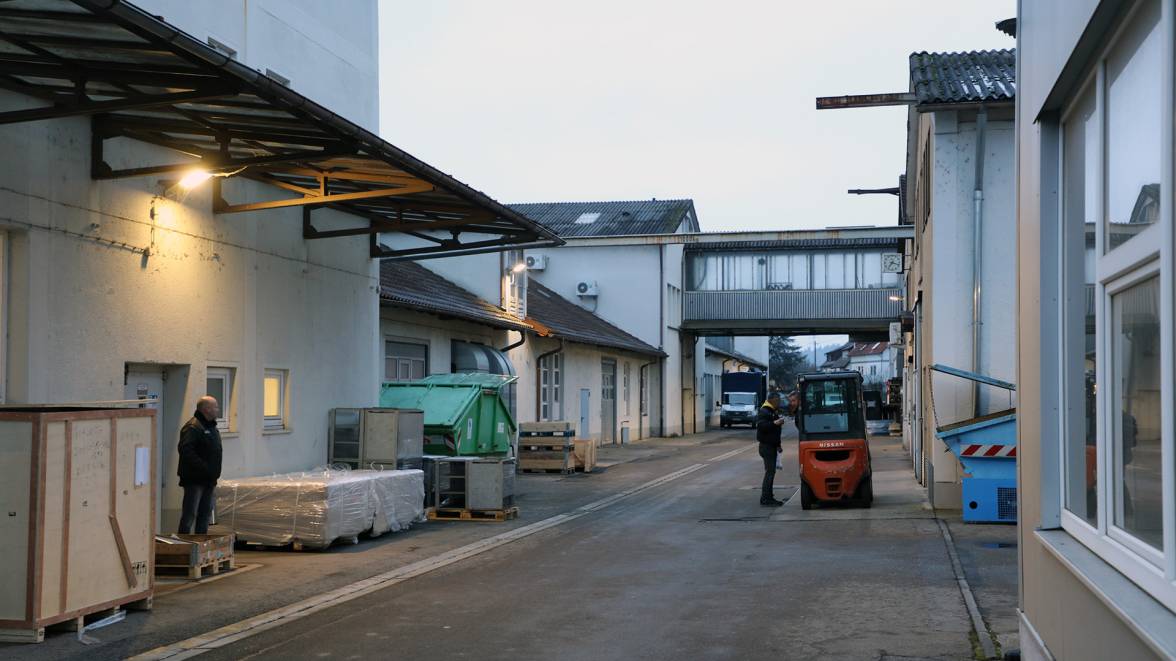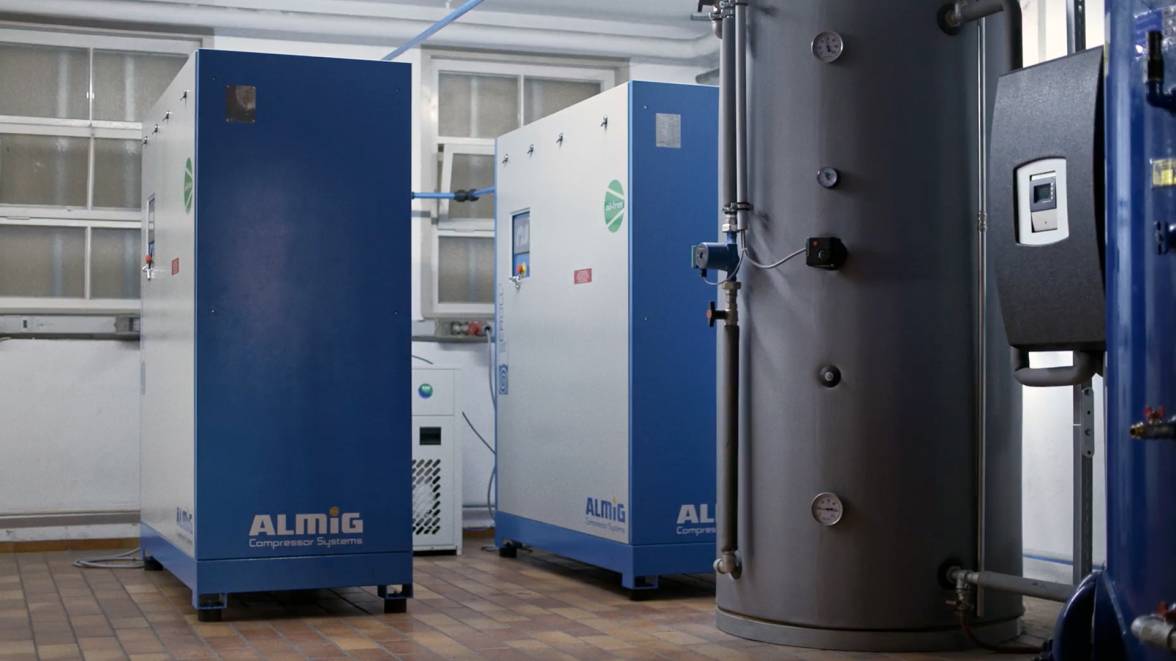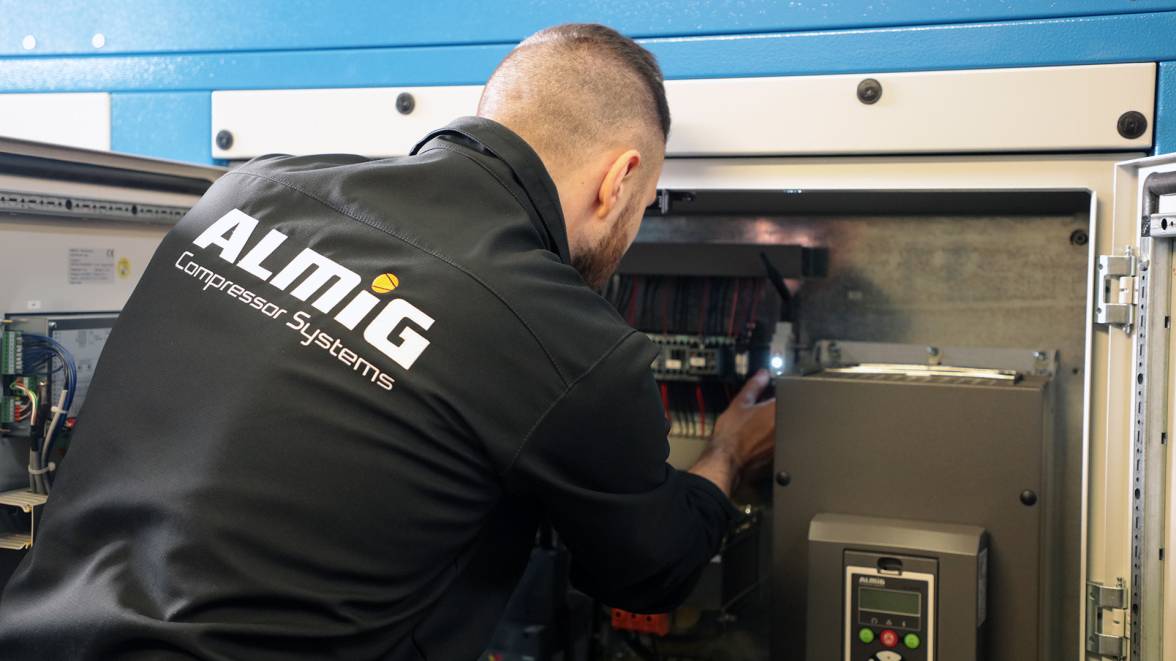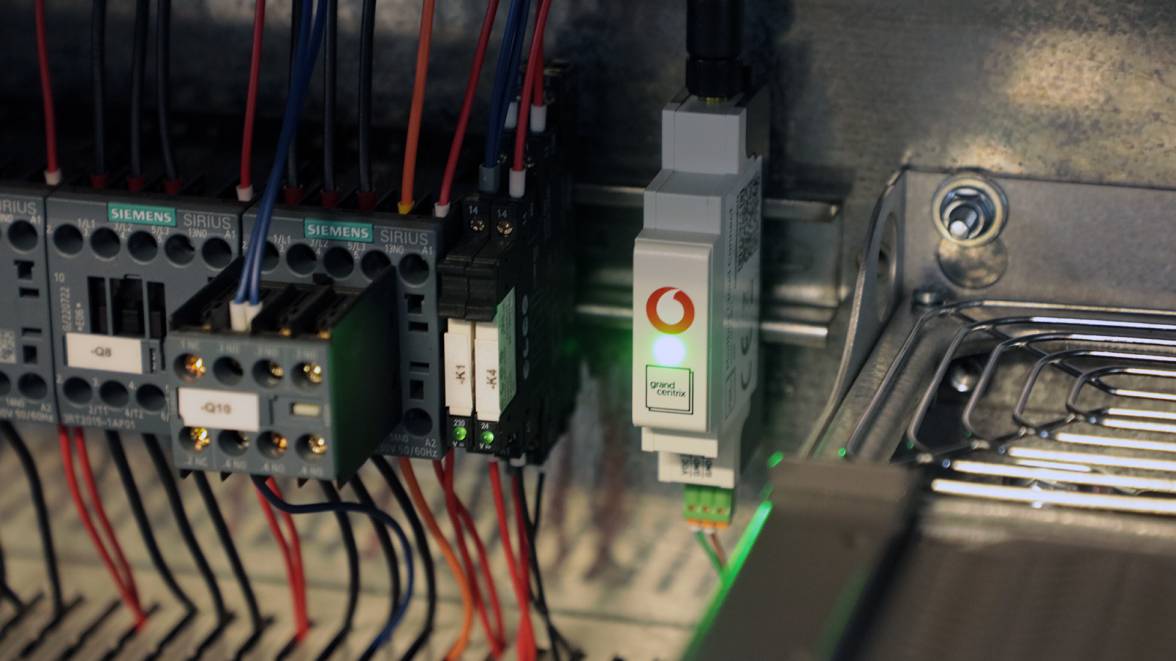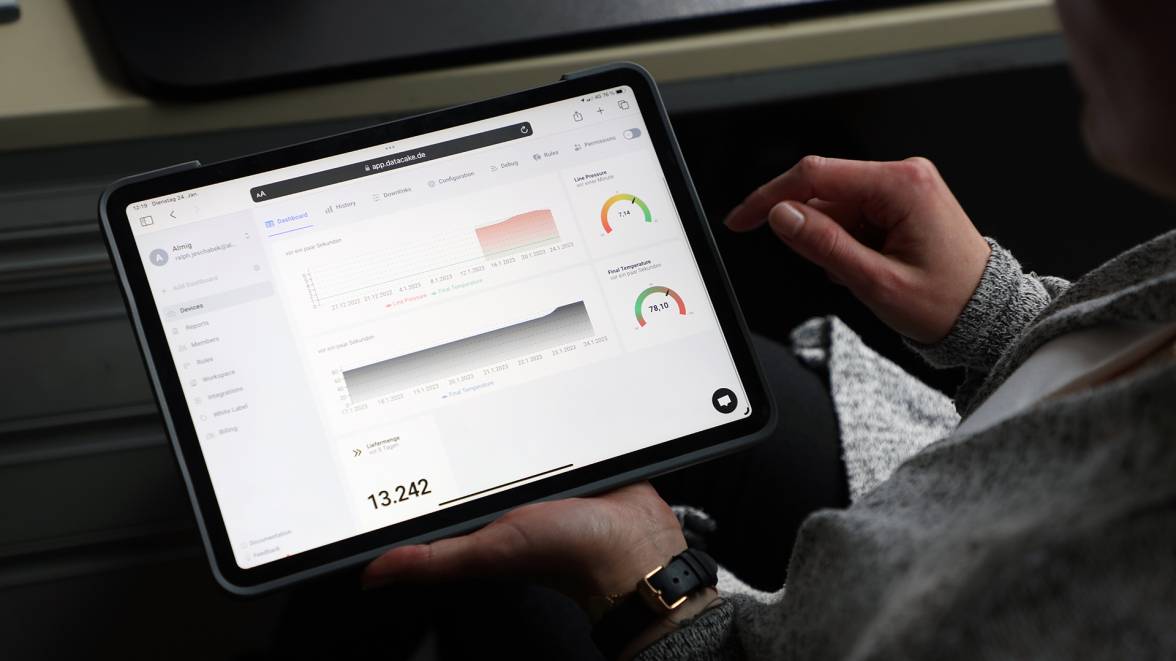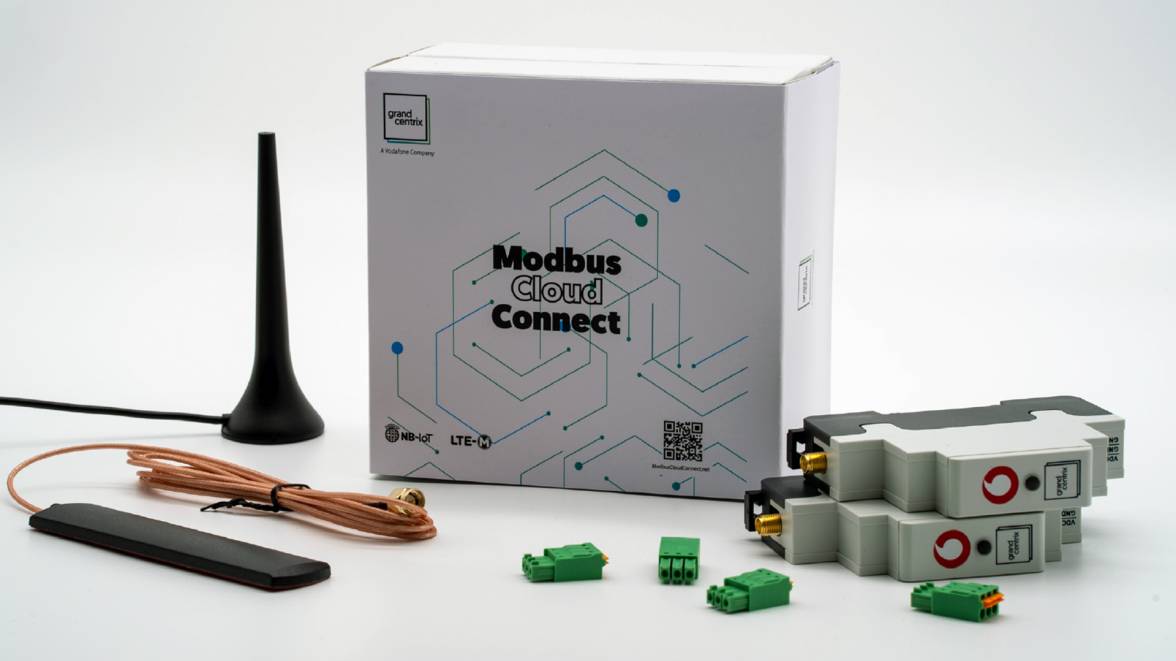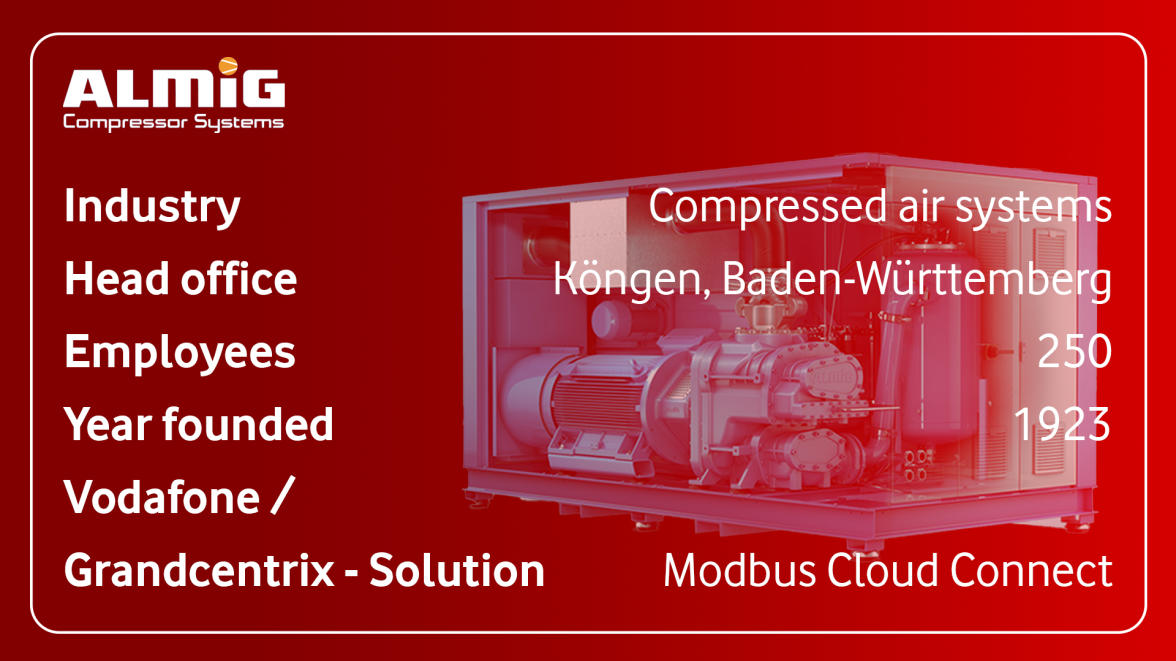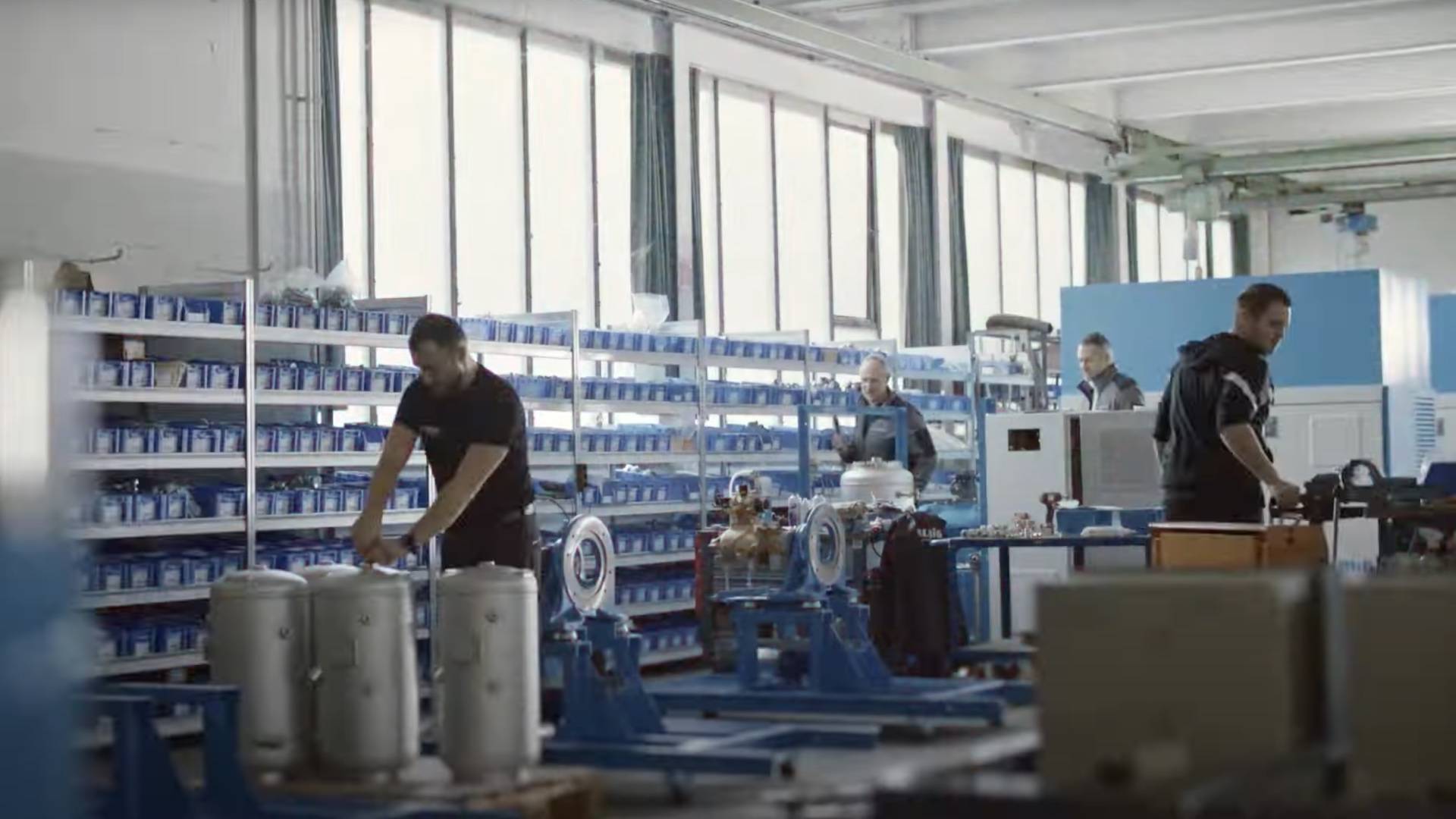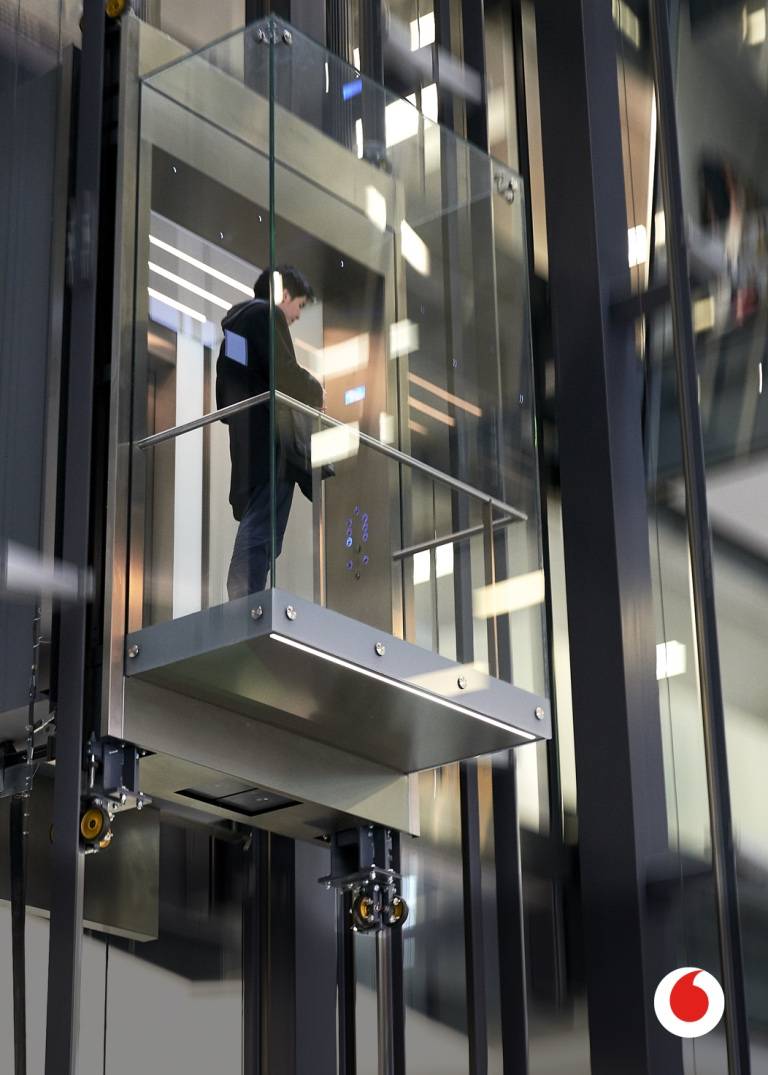A breath of fresh air for SMEs
Industrial IoT for SMEs
The ALMiG success story
The ALMiG success story
Industrial IoT for SMEs
The growth of the Internet of Things is unstoppable. Today, billions of machines are already interconnected worldwide. To benefit from the advantages of this technology, small and medium-sized companies in Germany need smart, affordable solutions that can be quickly implemented. We present one such solution in this edition of Business Cases.
Without digitalisation, we would not be competitive in the long term.

Ralph Jeschabek – Head of Marketing
Almig Kompressoren GmbH
The Challenge
Digitalisation for everyone
As a key technology within Industry 4.0, IoT solutions provide manufacturing companies in particular with enormous competitive advantages. Companies that have already successfully networked their machines and systems report numerous benefits - including efficiency, better insight into business processes, cost savings, higher productivity and a better customer experience.
Nevertheless, studies show that small and medium-sized companies in particular are often reluctant to implement digitalisation measures. The reasons for this are often a lack of resources and expertise as well as the fear of high investments that are difficult to calculate. Yet it is essential for SMEs in particular not to lose any time when it comes to digitalisation.
Room for improvement
The Company
Hidden champion with tradition
Hidden champion ALMiG, whose name stands for "Automatic Air Pumps - Made in Germany", is a positive example of digitalisation in the SME sector. The company, headquartered in Köngen, Baden-Württemberg, is a leading system provider in the field of compressed air technology and can look back on 100 years of company history. ALMiG increases the productivity of its customers with innovative and customised products and comprehensive services, with the networking of systems playing a central role.
ALMiG was already offering its customers remote monitoring functions for its compressors via landline or mobile phone modems at the end of the 1990s. From this point onwards, ALMiG's developers tested various solutions for connecting their products to the network and ultimately decided in favour of using LPWA's Narrowband IoT and LTE-M network technologies.
The Solution
Plug-and-play for a smart compressor
The company decided to work with Vodafone and its IoT subsidiary grandcentrix to network its machines. "Modbus Cloud Connect clearly proved to be the most suitable solution for our purposes," explains Ralph Jeschabek, Head of Marketing at ALMiG Kompressoren GmbH. As compressors are often installed in machine rooms or basements, the LPWA (Low Power Wide Area) technologies Narrowband IoT and LTE-M, which are used for data transmission and can send and receive signals even through thick walls or other obstacles, have proven particularly useful. "The slim form factor and the ability to use our existing top-hat rails were also helpful for us, allowing us to offer an IoT upgrade for our machines." It was also crucial to be able to continue using the existing protocol for device control - namely Modbus RTU. Another factor was the simple connection of existing sensors and actuators in the products. "A cloud platform for the service is already in use at ALMiG," explains Ralph Jeschabek. "The simple and flexible data integration of the Modbus Cloud Connect gateways into our existing cloud infrastructure was therefore important."
The compressed air systems enhanced with "Modbus Cloud Connect" are connected to the internet and report operating and consumption data to the ALMiG cloud. ALMiG's asset relationship management system "COMPASS", which is available to customers and partners, takes over the analysis, visualisation and further processing of this data. The information is important for ensuring and, if necessary, improving the energy efficiency of the machines: A missed oil filter change quickly leads to higher consumption in air compressors. Potential savings can also be derived from the machine data, for example by lowering the operating temperature. It is now also possible to compare consumption data with other users of the same machine type. The data from the compressors also provides ALMiG with new insights that enable new applications - for example, customised usage and service instructions for customers. The results of data analyses are also incorporated into the further development of products.
Transparency creates efficiency
The Advantages
At a glance
The applications realised by ALMiG on the basis of this technology are diverse. They range from classic status monitoring and asset management to the analysis and visualisation of machine operating times and capacity utilisation through to predictive maintenance.
Simple installation and commissioning
thanks to the self-service portal and preconfigured cloud adapter
Secure, autonomous data transmission
via NB-IoT and LTE-M
Retrofit
for existing equipment
and new equipment
Reliable operation
over the life cycle with over-the-air firmware updates and service desk
5 questions for R.Jeschabek and J.Reber
Ralph Jeschabek and Jürgen Reber
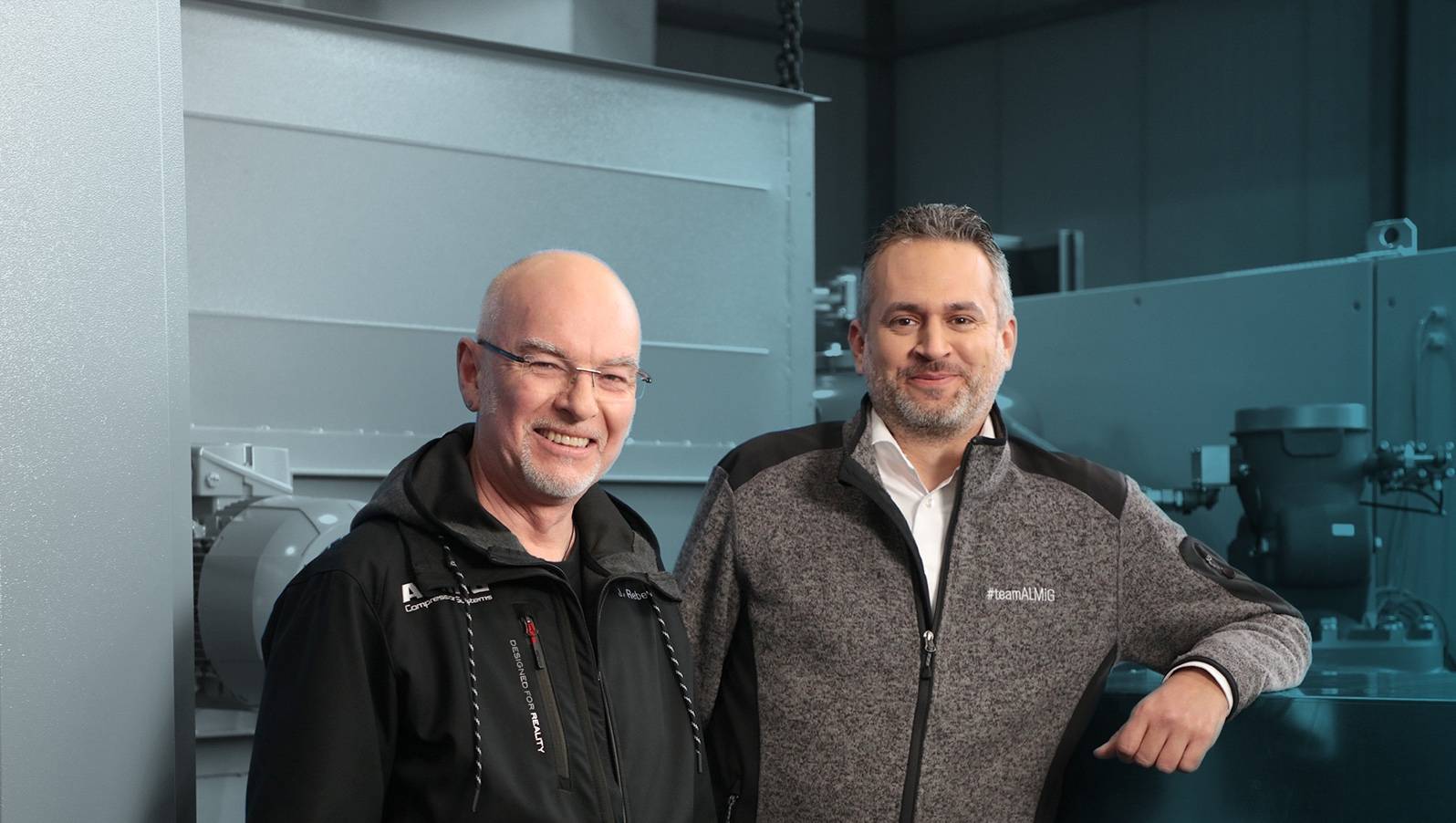
5 questions for Ralph Jeschabek and Jürgen Reber
Energy costs as a driver of digitalisation
The Industrial Internet of Things also offers medium-sized companies the opportunity to renew traditional processes and uncover potential for optimisation. We spoke about this with Ralph Jeschabek, Head of Marketing, and Jürgen Reber, Service employee at ALMiG.
Mr Jeschabek, Mr Reber: Digitalisation and air pressure systems – how do they go together?
Ralph Jeschabek: In our opinion, they go together very well! Compressed air is an essential part of industrial processes; every company has compressors in use somewhere. Due to the transition to Industry 4.0 and the increasing networking of processes and systems, the pressure to digitalise has increased noticeably in recent years. The control of our compressors was already microprocessor-based, but networking from the location of the systems to the outside only took place in rare cases until now - this is where digitalisation comes into play.
There are many benefits of networking – primarily transparency.

Ralph Jeschabek
Head of Marketing of ALMiG Kompressoren GmbH
Jürgen Reber: Daily experience in service has shown that transferring the control data from the compressors to the customers is a major challenge. We're not talking about small machines, like the ones end users are familiar with from the DIY store, but complex air pressure systems for industrial use. The systems are correspondingly noisy and temperature-intensive during operation. This is why they are often located in well-shielded places that are difficult to reach via normal wireless networks. Thanks to Modbus Cloud Connect, we were able to solve this problem.
What are the benefits of networking – for you and your customers?
Ralph Jeschabek: There are many advantages of networking - first and foremost transparency: whereas previously the operating data of the systems had to be read manually on site, it can now be transmitted digitally to the customer. This opens up new possibilities for optimising operating statuses and energy efficiency. Ease of use is also an important issue. For us as a manufacturer, it is also an advantage that we can provide customers with better support along their user journey. For example, by regularly informing them of the next maintenance appointment or proactively contacting them if there are any anomalies in the operating data. This also increases customer loyalty.
Jürgen Reber: The gain in operational safety is considerable. As a rule, we recommend that our customers check their air pressure systems once a day. However, most of them do this at most once a week, if at all. However, in times when stock levels are much lower than they used to be, this harbours great risks. At worst, the failure of an industrial compressor can result in serious production interruptions. The financial damage for a medium-sized company is enormous and can amount to tens of thousands of euros for just a few hours. Digital monitoring of the compressors ensures that anomalies are recognised at an early stage and operational failures are avoided.
What motivated you to take the step towards digitalisation with ALMiG?
Ralph Jeschabek: On the one hand, our younger employees, for whom it is natural to question things and expect all processes to be digitalised. On the other hand, we have also realised that our customers now have different expectations than they did just a few years ago. In order to fulfil these expectations, we turned to grandcentrix and Vodafone.
Transparent recording of real-time operating data is essential in order to implement optimisation potential in a targeted manner – and this can only be achieved digitally.

Jürgen Reber
Service Technician of ALMiG Kompressoren GmbH
What convinced you of the Modbus Cloud Connect solution?
Ralph Jeschabek: It was important to us that we didn't have to change our systems: The digital solution had to fit into our existing systems. All our control systems from the last ten years already have a Modbus RTU interface. The signals were therefore already available and did not require any reprogramming. The proposed solution is compact enough to be mounted on any standard DIN rail. Practically all that needs to be done is to supply power and run a cable to the controller - and that's it.
What advice would you give to SMEs that want to take the plunge into digitalisation?
Ralph Jeschabek: Digitalisation requires time and money. And although many German companies have sufficient resources thanks to well-filled order books, they often don't have time to deal with the topic for the same reason. For a long time, there didn't seem to be any urgency - the customers came anyway. This view has been refuted since the energy crisis of recent months at the latest.
Jürgen Reber: The increase in energy costs is indeed a strong driver for many people to question traditional processes. Whereas it used to be relatively irrelevant how long a compressor was in operation, people are now increasingly looking for optimisation potential. A system may only need to run for certain periods of time in order to optimise production. However, in order to be able to implement this precisely, the transparent recording of real-time operating data is essential - and this can only be achieved digitally.
Mr Jeschabek, Mr Reber, thank you for the interview!
Glossar | Do you speak IoT?
Do you speak IoT?

Glossary Digitalisation
Do you speak IoT?
In order not to miss the connection to the Industrial Internet of Things (IIoT), you should also have the necessary expertise. Whether PDC, MQTT or Modbus RTU: you'll find the answers you're looking for in our IoT glossary.
Modbus RTU
protocol
Nothing works in a company without good communication. This applies not only to interpersonal interactions, but also to those between machines and computers. To ensure that everything runs smoothly, various protocols have been established over the years - such as Modbus.
Developed in 1979, this communication protocol has long been standard in the industrial sector. There are different versions - including Modbus RTU. The abbreviation RTU stands for "Remote Terminal Unit" and refers to a variant of the Modbus communication protocol that transmits data in binary form.
BDE/MDE
Production/machine data acquisition
Production data acquisition (PDA) records all the data of a company for the purpose of evaluation and optimisation. It is a data-based mapping of the current status, with detailed information on orders, personnel, processes and machines. If the focus of data collection is only on the latter, this is referred to as machine data collection (MDC). IoT solutions offer ideal conditions for implementing MDC efficiently and cost-effectively.
Cloud- Adapter
MQTT, HTTP
The term "cloud adapter" refers less to a specific technology than to all tools that ensure a connection between hardware and the cloud. In the context of IoT, this can refer to protocols such as MQTT or HTTP.
MQTT (Message Queue Telemetry Transport) is a message protocol that is very well suited to machine-to-machine (M2M) communication thanks to its low bandwidth and high latency. HTTP (Hypertext Transfer Protocol) is a data transfer protocol introduced in 1991 that is mainly used to upload hypertext documents (web pages) to a web browser. It therefore forms the basis for the World Wide Web.
eSIM
MFF2 SIM card
Many end device users are also familiar with the term eSIM. It refers to an embedded SIM card (the "e" stands for "embedded") - a solution that is being used more and more in devices such as smartwatches and smartphones.
Embedded SIM cards are available in various form factors, with the Machine-to-Machine Form Factor 2 (MFF2) being the most suitable for IoT applications. Thanks to their robustness and a service life of up to 17 years, MFF2 SIM cards, also known as SIM chips, offer the best conditions for the sustainable networking of devices.
LPWA
NB-IoT and LTE-M
The abbreviation LPWA stands for "Low Power Wide Area" and refers to all network technologies designed for wireless communication with low energy consumption and a long range. The collective term is therefore similar to abbreviations such as LAN or WAN, for which there is also no official definition.
The most successful and latest LPWA technologies include LTE-M and NB-IoT. Both mobile technologies use the existing network infrastructure, not just in Germany but worldwide thanks to standardisation.
NB-IoT is short for "Narrowband Internet of Things" and refers to a particularly energy-saving mobile technology that requires narrower bandwidths than conventional networks, but can network devices in hard-to-reach areas such as basements or machine rooms.

